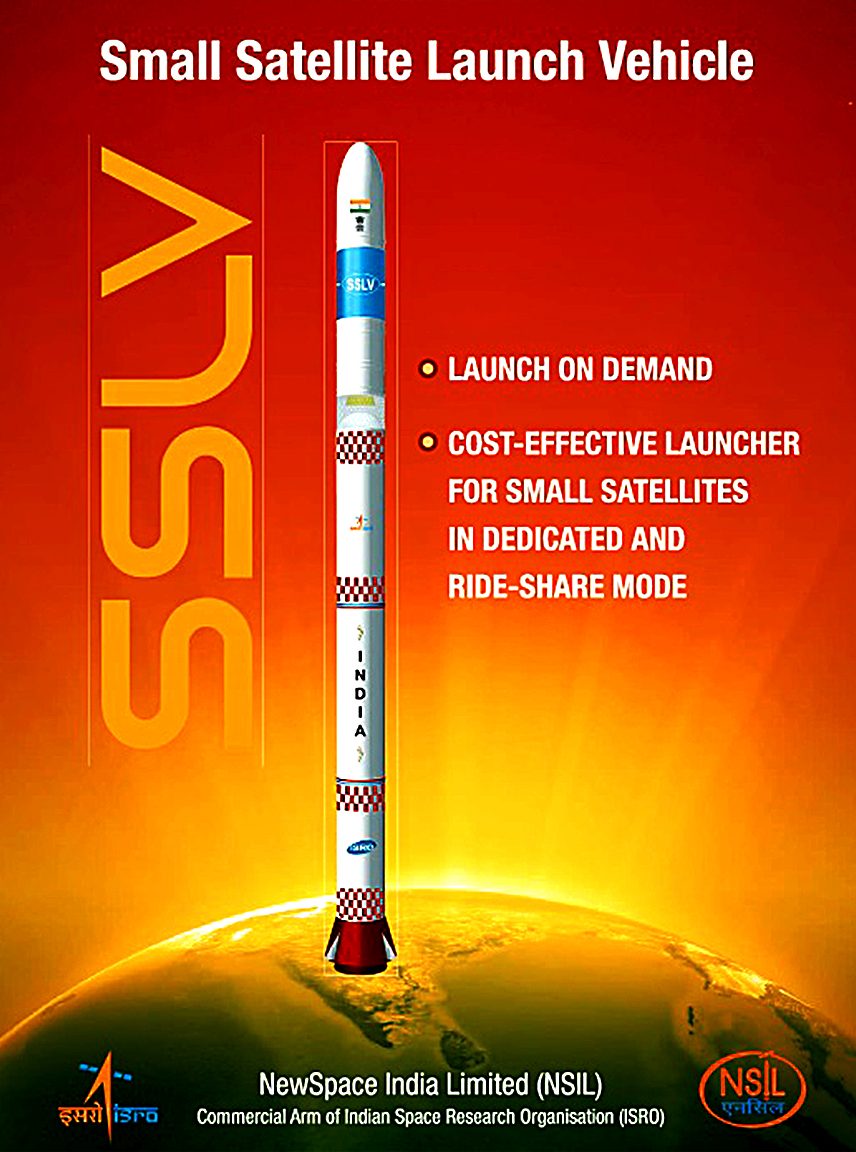ISRO’s Small Satellite Launch Vehicle (SSLV), a new addition to India’s space launch capability, has successfully demonstrated its potential with the third developmental flight, SSLV-D3. This mission, launched on August 16, 2024, marked a significant milestone for the Indian Space Research Organisation (ISRO) as it successfully deployed the Earth observation satellite EOS-08 into its intended orbit. India is the only country as on date with SSLV capability.
Tech Specs of the SSLV
The SSLV is a small lift launch vehicle designed to cater to the growing demand for launching small satellites. Key specifications include:
• Height: 34 meters
• Diameter: 2 meters
• Lift-off mass: 120 tons
•Payload capacity: 500 kg to low Earth orbit (LEO) or 300 kg to Sun-synchronous orbit (SSO)
• Configuration: Three solid stages and a liquid propulsion Velocity Trimming Module (VTM) upper stage
The SSLV-D3 Mission
The SSLV-D3 mission was a crucial test for the SSLV’s capabilities. The primary objective was to accurately place the EOS-08 satellite into its designated orbit, which it achieved flawlessly. EOS-08 is equipped with advanced instruments for Earth observation, including an Electro-Optical Infrared Payload (EOIR) and a Global Navigation Satellite System-Reflectometry (GNSS-R) payload.
Significance of the Achievement
The successful launch of SSLV-D3 has several implications for India’s space program:
1. Enhanced Launch Capabilities: The SSLV adds to India’s launch vehicle fleet, providing a more versatile and cost-effective option for launching small satellites. This will enable India to participate more actively in the growing small satellite market.
2. Technological Advancement: The development of the SSLV showcases India’s technological prowess in rocket design and propulsion systems. It also demonstrates the country’s ability to innovate and meet the evolving demands of the space industry.
3. Commercial Opportunities: The SSLV’s success opens up new commercial opportunities for India’s space sector. ISRO can now offer launch services for small satellites from various countries, contributing to the nation’s economic growth.
4. Future Missions: The SSLV-D3 mission paves the way for future launches of small satellites, including those for scientific research, communication, and Earth observation purposes. This will further enhance India’s capabilities in space exploration and utilization.
History of ISRO and SSLV Project
ISRO, the Indian Space Research Organisation, was established in 1969 as the Indian National Committee for Space Research (INCOSPAR). It was renamed ISRO in 1972. Since its inception, ISRO has made significant strides in India’s space program, achieving numerous milestones.
Some of ISRO’s major achievements include:
• Satellite Launches: ISRO has successfully launched numerous satellites for various purposes, including communication, remote sensing, navigation, and scientific research. Notable satellites include INSAT, Chandrayaan, Mangalyaan, and GSAT.
• Launch Vehicles: ISRO has developed a range of launch vehicles, including the Polar Satellite Launch Vehicle (PSLV) and the Geosynchronous Satellite Launch Vehicle (GSLV). These vehicles have enabled India to launch satellites into various orbits.
• Space Exploration: ISRO has ventured into space exploration with missions like Chandrayaan-1, which was India’s first lunar probe, and Mangalyaan, India’s first mission to Mars.
• Space Applications: ISRO has developed and deployed various space-based applications, such as telecommunications, broadcasting, weather forecasting, and disaster management.
SSLV, the Small Satellite Launch Vehicle, is a potential predecessor to reusable launch vehicles and could also be a potential game changer in the areas of satellite-based internet services in the rural or geographically challenging regions in the future. Also, a potential opportunity for academia, private players and other government agencies to use these services for low cost.
The successful launch of SSLV-D3 is a testament to ISRO’s dedication and expertise in space technology. It marks a significant step forward for India’s space program and positions the country as a leading player in the global space industry.
About the Author
Dr. Vinay Karanam is a chartered Mechanical and Nuclear Engineer. He is an international consultant with extensive expertise on advanced nuclear and aerospace technologies. Currently, CEO and Principal Engineering Scientist of kvinay.guru, who is a part of this project. He is also the secretary and treasurer of Mechanical Engineering Group (MEG) Engineering NZ.


